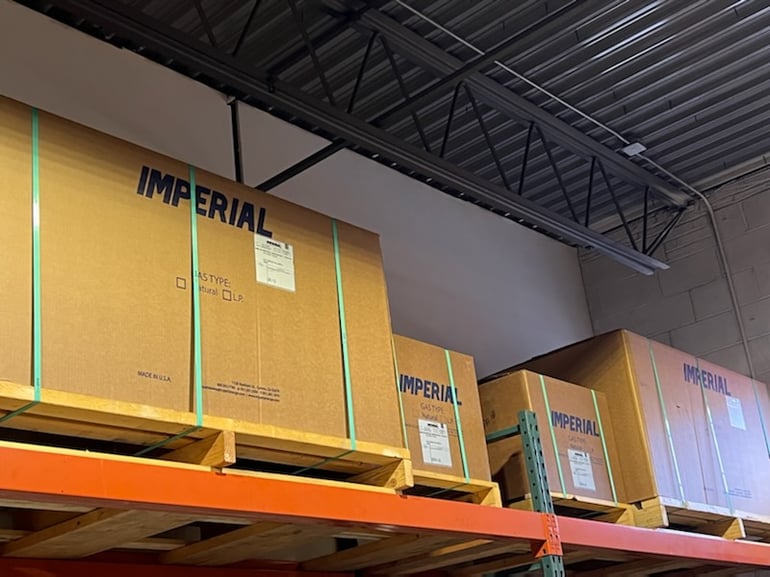Setting Your Restaurant Up For Success With Imperial Ranges
They’re called ranges for a reason. A great commercial range will deliver a range of different cuisine types and menu options at the same time. This level of versatility is a key ingredient to a restaurant's success both in the present and in the future, as ranges can also allow for menu changes down the road.
Between the different duties available, as well as gas or electric options, ranges come with tons of opportunities to customize. Let's take a closer look now.
Why Ranges Are a Restaurant Must-Have
The Difference Between The "Duty" Ranges
Restaurant or café ranges are ideal for lighter usage, hence the term “café range.” A café typically serves more drinks, with simple menu options or even outsourced baked goods. Restaurant ranges are usually between 24 and 72 inches long. This would mainly fit with sautee applications only.
A heavy-duty range (SPEC Series) is often similar to a café range, but they are built to withstand heavier usage and can hold deeper pots. These models can usually be custom-ordered as island suites. They are also bigger than their light-duty cousins, coming in around 32 to 36 inches per section. They are more commonly found in hotels, catering, and casinos (as well as high-end high-volume restaurants.)
Electric vs. Gas Ranges
The most basic difference between the two is that electric ranges use electricity, while gas ranges are fueled by natural gas or propane. An electric cooktop features a smooth surface in newer models or heated coils in older models. Gas cooktops use open flames to prepare food. Both gas and electric ovens heat food using radiation from internal heaters. Ranges are available for both options.
Choosing Between Electric and Gas
There are pros and cons to both electric and gas. The optimal choice comes down to the specific needs of each commercial kitchen.
For a cuisine that requires charring, the open flames of a gas cooktop are the way to go. And because gas burners release more moisture, they’re also ideal for items like cakes and pies. The cost of operation may be lower for gas applications as well since gas is often more affordable than electricity. A gas oven requires a gas line, however, so kitchens may need to run a gas line before installation. There is slightly more of a safety risk with gas applications, as well.
An electric range can be preferable for foods that benefit from a more even heat distribution. The drier heat they provide also helps when cooking food that needs to be crispy. Electric ranges are compatible with nearly any commercial kitchen since they do not require a gas line. While potentially more expensive to operate than gas, an electric unit can actually be even more affordable to run if it operates on solar or wind power. They also heat faster than open flames.
Jay Mark Group Has Imperial Ranges in Stock

While so much of the world is struggling with supply chain issues, restaurants can count on Jay Mark Group to provide Imperial Ranges with no shipping delays or long waiting periods for delivery. Whether gas or electric, Imperial Range's Pro Series is a day-to-day workhorse. Businesses can customize the mid-range priced equipment of Pro Series to their needs with convection ovens, 4-6 burner ranges, countertop griddles, charbroilers, and more.



